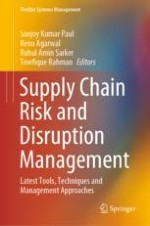In this book, a risk management approach starts off by discussing important issues related to managing supply chain disruption risks from various perspectives during VUCA times. It explores the essence and principles relating to managing these risks and provides the framework and multi-goal model groups for managing such unknown-unknown risks and subsequent disruptions at a global scale.
The book explores and presents the latest developments across different emerging topics in supply chain risk and disruption management. These include (i) an overview of supply chain risk, and disruption management tools, techniques, and approaches, (ii) a review on uncertainty modeling for decentralized supply chain systems, (iii) supply chain deep uncertainties and risks - the 'new normal', (iv) emergent technologies for supply chain risk and disruption management, (v) supply chain resilience strategies for times of unprecedented uncertainty, (vi) the role of blockchain in developing supply chain resilience against disruptions, (vii) a qualitative study on supply chain risk management adopting blockchain technology, (viii) assessment of risks and risk management for agriculture supply chain, (ix) resilience of agri-food supply chains: Australian developments after a decade of supply and demand shocks, (x) prioritization of risks in the pharmaceutical supply chains (xi) improving medical supply chain disruption management with the blockchain technology, and (xii) impacts of resilience practices on supply chain sustainability.
The book contributes significantly to the growing body of knowledge concerning the theory and practice of managing supply chain risks and disruptions in strategic management, operations and supply chain, and sustainability literature. It presents contemporary, innovative and latest developments in applying smart management tools, techniques and approaches for managing supply chain risk and disruption and future-proofing supply chains to become agile, resilient and sustainable.
